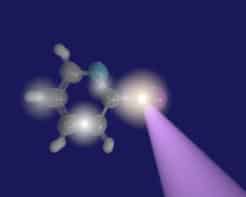Japanese physicists have captured a single positive charge and transferred it between two silicon 'traps' for the first time. The trap is a miniature charge-coupled device - a tiny version of the component found in many electronic appliances - and could enable the unit of current to be defined more accurately than ever before. Akira Fujiwara and Yasuo Takahashi of NTT Basic Research Laboratories in Kanagawa believe that their device can be easily integrated into existing silicon-based electronics, and could even act as a binary switch in a quantum computer (A Fujiwara and Y Takahashi 2001 Nature 410 560).
Devices already exist in which single electrons can be ‘handled’ – they hop along a series of specially designed conducting islands by ‘tunnelling’ through the potential barriers that separate them. But these devices are complicated and have not yet been made from silicon – an important requirement for any device that is to be incorporated into mass-produced electronics.
Fujiwara and Takahashi instead trapped a positive charge – known as a ‘hole’ because it is the space left by a migrating electron – and flipped it between two potential ‘wells’ in a nanometre-sized version of a charge-coupled device. A short pulse of light is used to create positive holes in a silicon wire, which is in contact with two closely spaced electrodes. A voltage is then applied to the wire through one of the electrodes, creating a local potential well in the wire, in which a hole becomes trapped. But when the voltage is switched to the second electrode, a new potential well develops and the first one disappears. The hole then jumps into the new well – and continues to hop backwards and forwards as the voltage alternates between the electrodes.
As it moves, the hole influences a ‘sensing’ current that flows past the potential wells, monitoring the exact position of the hole at any instant. This is an accurate measure of the current, which is defined as the movement of a charge carrier – in this case a positive hole – over time.
At present, our most precise measurements of current are much less accurate – by about six orders of magnitude – than our best measurements of quantities like time or length. The new device – which operates at 25 kelvin – could be a crucial step towards a new standard for current measurement. The ‘switching’ action of the device could also be used as a basis for a quantum computer: the path that a single charge follows at a branch in a silicon wire could represent an individual bit of information.



